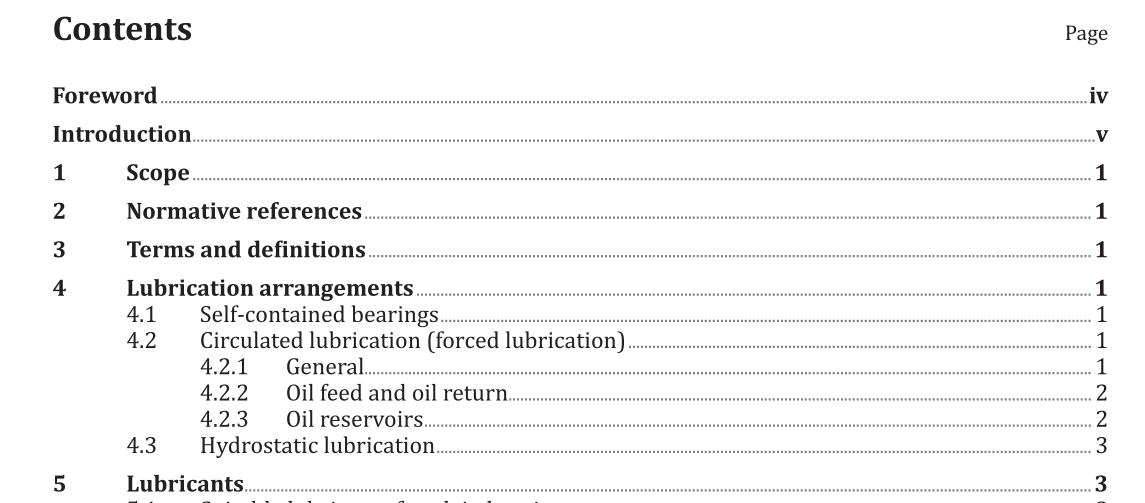ISO 19349:2019 pdf download.Plain bearings with liquid lubrication — Lubricant supply arrangements and monitoring
1 Scope
This document provides requirements and guidance on lubricant supply arrangements and monitoring for liquid-lubricated bearings (plain bearing assemblies) such as those specified in ISO 11687 (all parts). This document is intended to assist the design of oil-based lubrication systems for hydrodynamic plain bearings mainly to be used in large-scale rotating machinery for power generation, industry and transportation. This document focuses on the most important requirements and characteristics of lubricant supply arrangements and monitoring for plain bearings. Additional standards such as ISO 10438-1, ISO 10438-2 and ISO 10438-3 would be needed to design complete low-pressure or high-pressure lubrication systems, along with their corresponding components. Wherever this document specifies a particular form of solution, whether design or operation, different solutions can be selected provided they are justified by engineering assessment or reference to similar systems already in operation.
4.2.2 Oil feed and oil return
To minimize the possibility of vibrations or thermally induced tensile or compressive stresses occurring in the bearing housing, flexible compensators or connections shall be provided in the oil supply and drain piping systems if applicable. For electrically insulated plain bearings, it is necessary to consider whether oil supply and drain pipes connected to the bearing also need insulating to prevent short circuit of the bearing insulation. To restrict the pressure losses in the piping system to an economically justifiable amount, the oil mean flow velocity should not exceed 2 m/s in the supply lines according to experience. The design of the return fluid flow path from the bearing to the oil reservoir shall be determined by the technical requirements of the bearing housing and the design requirements of the overall system installation. When the return flow is driven by gravity, oil return lines shall have a slope of at least 5 %. According to ISO 10438-1, oil drains shall be sized to run no more than half full when flowing at normal drain operating temperature at maximum flow conditions and shall be arranged to ensure good drainage (recognizing the possibility of foaming conditions). Junctions and changes in the direction of pipes shall be designed so as not to impair lubricant flow. Sharp bends and down or up loops shall be avoided. Junctions in return pipes shall be located in the direction of flow. In order to prevent foaming, vertical slopes exceeding 1 m in length shall be avoided. No devices significantly impeding the flow in the return line, such as filters, etc. shall be installed. Where more than one device (bearings, and possibly other consumers) is to be supplied with lubrication oil, the design of the oil supply and circulation system should mitigate against the potential harmful interactions in the return lines and oil reservoir caused by differential air pressure conditions.
ISO 19349:2019 pdf download
